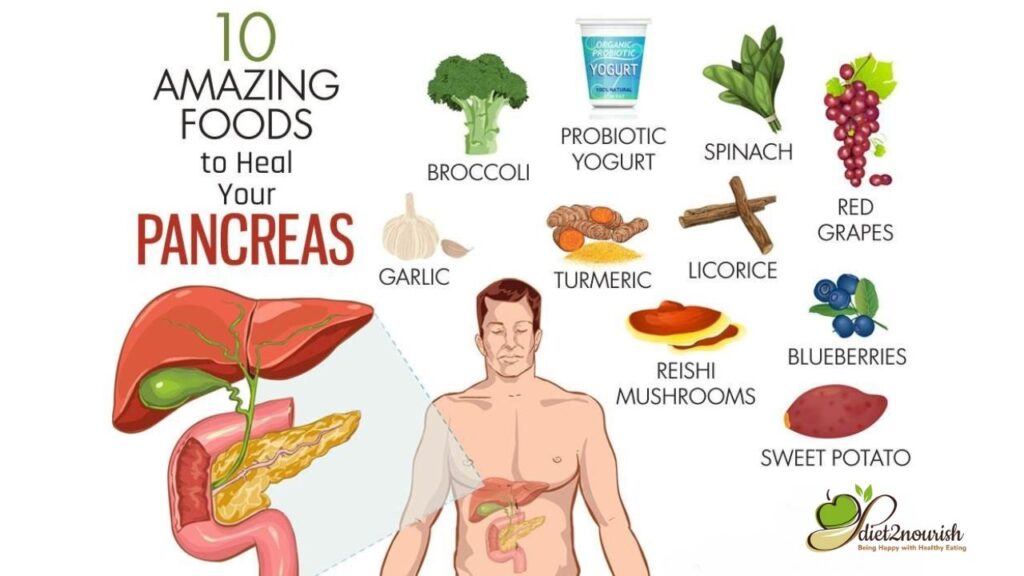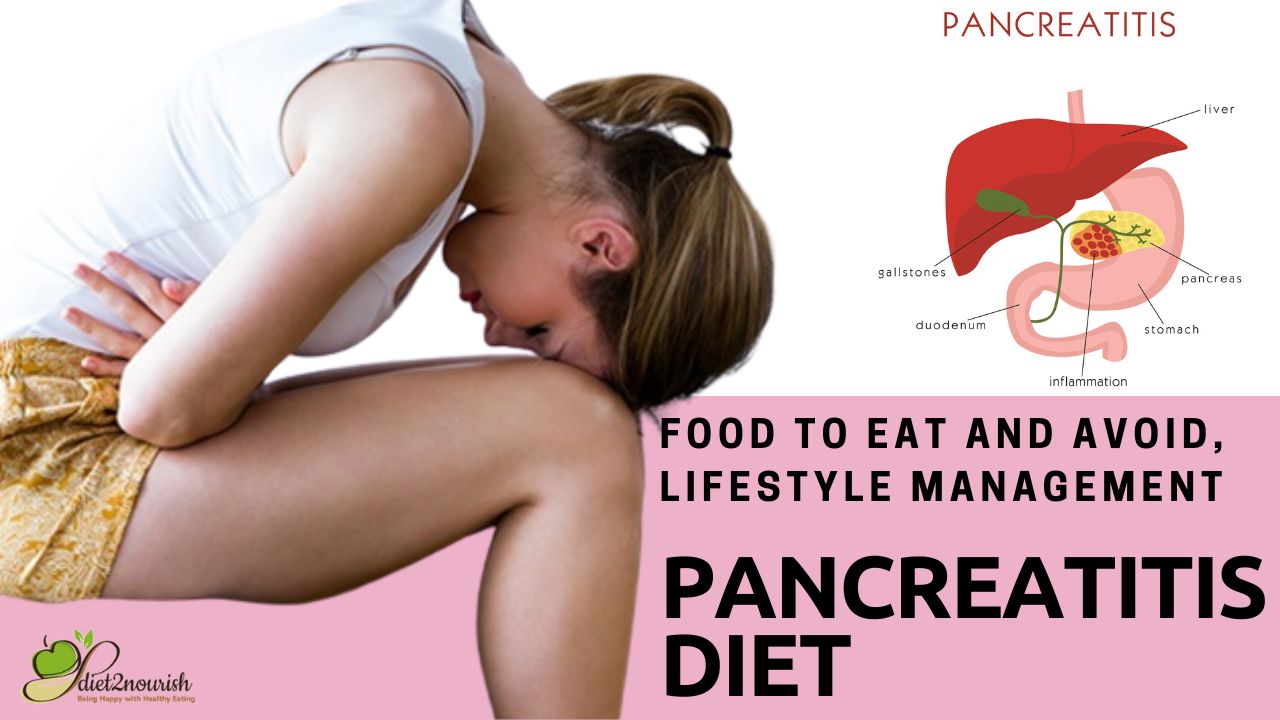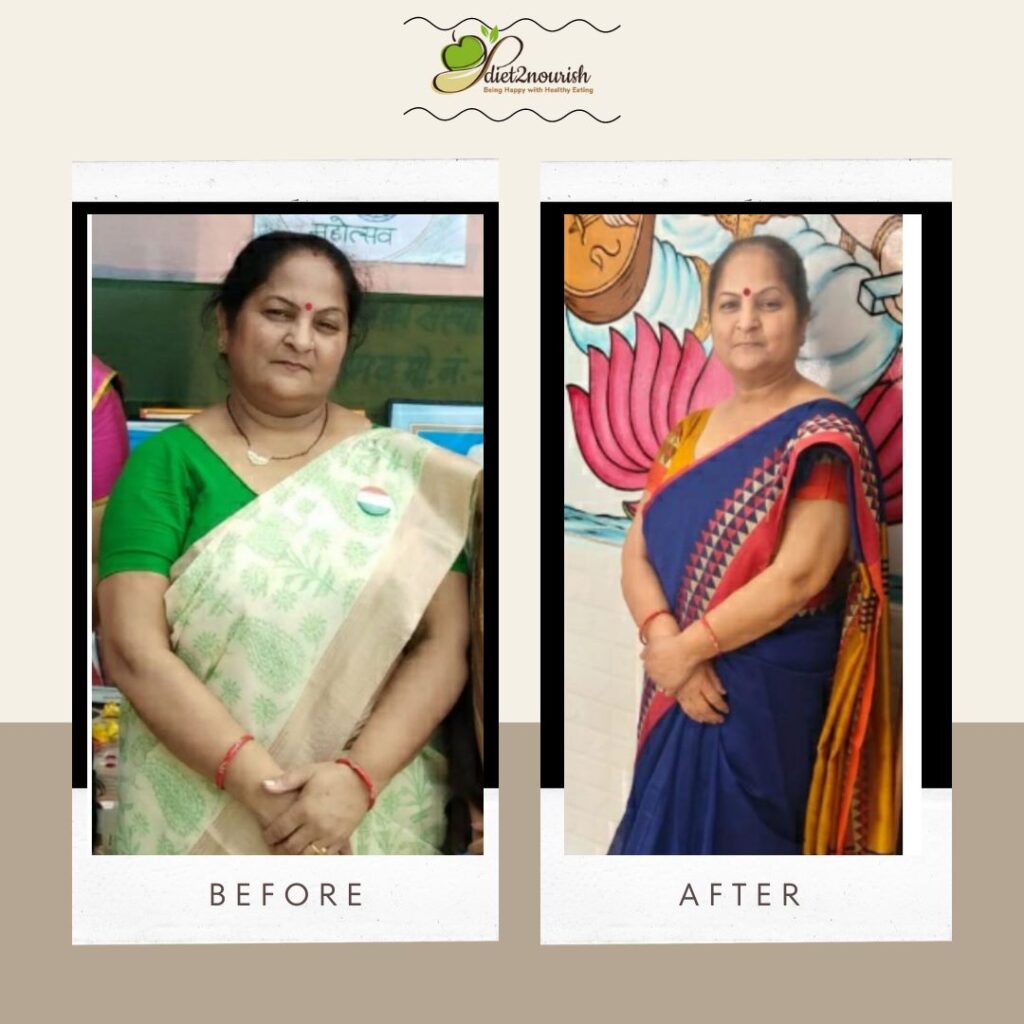Pancreatitis Diet
The pancreas is a vital organ in the human body. The functionality of numerous organs and systems in the human body, along with the health of the whole body, strongly relies on the health of our digestive systems, especially the pancreas which is responsible for the production of digestive enzymes. Also, the pancreas sends hormones to our bloodstream, so that our body can properly utilize glucose from foods and in turn provides us with the much-required energy. The human pancreas is a small gland located behind the stomach, and it is vital to keep this gland healthy at all times. Because the pancreas plays a very crucial role in the digestion of the food we eat, the Pancreatitis diet is one of the most important parts, that we should never overlook, especially when our pancreas is affected.
But, due to many reasons and also may be because of our negligence and maybe abuse also, the pancreas gets inflamed, and the enzymes produced by it are unable to reach the destined location, thereby affecting our health adversely due to the dysfunctionality of the digestive system, leading to an acute health condition called pancreatitis.
What is Pancreatitis?
Before moving further, it’s essential to grasp the basics of pancreatitis. This condition occurs when the pancreas becomes inflamed, either acutely (sudden onset) or chronically (long-term). Acute pancreatitis can result from gallstones, alcohol consumption, certain medications, or infections, while chronic pancreatitis typically develops over time due to ongoing inflammation and damage to the pancreas.
When our pancreas is inflamed, it is unable to produce enough digestive enzymes that help in the absorption of nutrients from the food we eat. Apart from losing weight, health and becoming malnourished. Some of the health issues that you may develop with your pancreas dysfunctional are:
- Acute Pancreatitis
- Chronic Pancreatitis
- Type 1 and 2 Diabetes
1. The basis of any pancreatitis recovery diet includes:
- Food that you eat with pancreatitis should be low in fat and high in proteins and carbohydrates.
- Your total fat intake should be around 30 gms and should not cross 40 gms.
- Eating large and sparingly could elevate the symptoms. Eat small, but frequently.
- Avoid all kinds of spicy foods, caffeine, nicotine, and foods that form gas inside your stomach to avoid harmful and unnecessary stimulation of your pancreas.
- No alcohol at all. The smallest quantity can cause adverse reactions.
To best achieve all these goals, it is important that for your pancreatitis, you follow the acute pancreatitis diet that encourages you to eat high protein, and nutrient-dense foods like fruits, vegetables, low-fat dairy, and lean protein sources. Stay away from alcohol and fried and fatty foods to prevent malnutrition and get relief from pain.
Why Pancreatitis Diet Matters?
Diet plays a crucial role in managing pancreatitis because it directly affects the pancreas’s workload. Friendly foods for pancreatitis aims to reduce stress on the pancreas by minimizing its need to produce digestive enzymes. This allows the pancreas to heal and recover. Pancreatitis diet is designed to help manage inflammation of the pancreas, a vital organ involved in digestion and blood sugar regulation. There are two main types of pancreatitis: acute and chronic, chronic pancreatitis diet can vary from acute pancreatitis diet. Here are some general guidelines:
Clear Liquid Diet (Acute Pancreatitis): During the initial phase of acute pancreatitis, patients may be restricted to a clear liquid diet to give the pancreas time to heal. This includes broth, clear juices, and gelatine.
Low-Fat Diet: Whether you have acute or chronic pancreatitis, a pancreatitis low-fat diet is essential. Fat can be hard for the pancreas to digest and can trigger symptoms. Limit fried foods, fatty cuts of meat, full-fat dairy, and oils.
Small, Frequent Meals: Eating smaller, more frequent meals can reduce the strain on your pancreas and help manage blood sugar levels.
Lean Protein: Opt for lean sources of protein like skinless poultry, fish, and legumes. These are easier for the pancreas to handle.
Complex Carbohydrates: Choose complex carbohydrates like whole grains, fruits, and vegetables. These provide essential nutrients and are generally easier to digest.
Avoid Alcohol: Alcohol can worsen pancreatitis. It’s important to abstain from alcohol completely if you have pancreatitis.
Hydration: Staying well-hydrated is crucial. Drink plenty of water to prevent dehydration, which can worsen pancreatitis.
Vitamins and Supplements: Depending on the severity and type of pancreatitis, your doctor may recommend supplements, such as pancreatic enzymes, to aid in digestion and nutrient absorption.
Limit Caffeine and Spicy Foods: These can irritate the pancreas and worsen symptoms in some cases.
Individualized Approach: It’s important to work closely with a healthcare provider or registered dietician to tailor your diet to your specific needs, as pancreatitis can vary greatly in severity and individual tolerance.
Foods to repair the pancreas

A pancreas-friendly diet is one that is high in protein from lean meats and is low in animal fats and simple sugars. You should seriously aim towards having more Fruits, Vegetables, Whole grains, Lentils, Beans, and Low-fat or Non-fat dairy and dairy products. Foods rich in antioxidants like dark leafy vegetables, sweet potatoes, carrots, pomegranates, walnuts, and grapes add a lot of benefits.
Eating more fruits, vegetables, and whole grains controls or limits your cholesterol intake and increases the amount of fiber you eat thus are the best foods to repair the pancreas. These foods thus reduce all chances of developing high triglycerides or gallstones, which may lead to acute pancreatitis. The anti-oxidants in the foods mentioned above fight the free radicals in your body, thus helping in reducing inflammation.
Foods good for Pancreas and Liver
Any form of damage to our pancreas can result in partial or complete dysfunctionality of the gland. Hence, the best way to keep it healthy and active is by using foods. Here are some of the best pancreas-friendly foods that you should include in your pancreatitis treatment diet:
1. Cruciferous Vegetables
Broccoli, Brussel sprouts, cabbage, and cauliflower top the list because of their high nutritional value and are extremely beneficial for protecting our pancreas from any sort of damage.
Spinach and broccoli are packed with the goodness of Vitamin K which helps in reducing inflammation and prevent reducing inflammation.
2. Garlic
Garlic is a boon for our pancreas. It helps reduce the amount of sugar in our blood by increasing the amount of insulin that our pancreas produces. Normally, garlic keeps our pancreas in good health.
The strong and anti-inflammatory qualities of garlic help lessen the toxicity of our pancreas and are perhaps the best food to include in any pancreatitis Indian diet.
3. Lemon
Lemon is sour, and sour foods help in the production of digestive enzymes and keeps our pancreas in good health. Kiwis, too have a similar impact on our pancreas.
4. Tofu
Tofu is one of the best sources of low-fat protein that aids in the better recovery of our digestive system and protects our liver and pancreas from any further damage.
Also, yogurt has active probiotic cultures that support digestion and shield the pancreas.
5. Oregano
Oregano is a distinct herb that flavors our dishes. It is also very effective against oxidation caused by diabetes. All these properties of oregano help the pancreas (insulin-producing organ) from any sort of damage.
6. Dandelion
Dandelion roots have been used for a long for the treatment of various types of cancers. It also serves as an effective treatment for the pancreas. Drinking dandelion tea helps in flushing out toxins from our intestines and heals the damaged pancreas tissues.
Foods to Avoid with Pancreatitis
It’s important to avoid foods that are high in fat, spicy, or acidic if you have pancreatitis. Here’s a list of foods to avoid:
1. Fried foods:
They are high in fat and can be difficult for your pancreas to digest.
2. Fatty meats:
You must avoid meats that are high in fat. It includes red meat and processed meats such as bacon, sausage, and beef.
3. Dairy products:
Avoid full-fat dairy products such as cheese, cream, and ice cream. You can choose low fat variants.
4. Spicy foods:
Spices are known to irritate your pancreas and lead to inflammation. You should not eat spicy foods.
5. Alcohol:
Alcohol can cause inflammation of the pancreas. It should be avoided.
6. High-sugar foods:
Foods that are high in sugar, can cause your pancreas to produce more insulin. It can cause inflammation and worsen your condition.
7. Processed foods:
Processed foods are high in fat, sugar, and salt. Therefore, you should avoid them.
What foods irritate the pancreas?
- Foods that are high in fat can irritate the pancreas, especially if you have pancreatitis or other pancreatic issues.
- High-fat foods can trigger the pancreas to release digestive enzymes, putting strain on an already inflamed or compromised organ.
- Spicy foods and alcohol can also be irritating to the pancreas.
When dealing with pancreatitis, it’s crucial to follow a diet that’s gentle on the pancreas. Here’s a simple recipe for a low-fat, pancreatitis-friendly meal:
Pancreatitis diet recipes for vegetarians
Certainly, here are a few pancreatitis diet food list with recipes suitable for individuals. These are also best foods for pancreatitis:
Vegetable Soup:
Ingredients: Carrots, zucchini, potatoes, celery, vegetable broth, and a pinch of herbs.
Instructions: Cook the vegetables in vegetable broth until soft, then blend into a soup. Add herbs for flavor.
Mashed Sweet Potatoes:
Ingredients: Boiled sweet potatoes, a touch of olive oil, and a sprinkle of cinnamon (optional).
Instructions: Mash the sweet potatoes with a fork, add a little olive oil for creaminess, and a sprinkle of cinnamon for flavor.
Quinoa and Steamed Veggies:
Ingredients: Quinoa, steamed broccoli, carrots, and a light lemon dressing.
Instructions: Cook quinoa, steam the veggies, and toss them together with a dressing made from lemon juice and a bit of olive oil.
Baked Tofu with Rice:
Ingredients: Tofu cubes marinated in a low-fat, low-spice sauce, served with plain rice.
Instructions: Marinate tofu, then bake until golden. Serve with plain rice.
Oatmeal with Banana:
Ingredients: Oats cooked with water or a non-dairy milk, topped with sliced banana.
Instructions: Cook oats, add a sliced banana on top, and perhaps a drizzle of honey if tolerated.
Remember, pancreatitis diets often require low-fat and low-spice options. It’s crucial to consult with a healthcare professional or dietician for low fat diet pancreatitis recommendations and to ensure your specific dietary needs are met.
Food to Avoid High Amylase
Hyperamylasemia or high blood amylase levels are in itself not any condition but is a symptom of several underlying conditions and one of the most evident is acute or chronic pancreatitis.
Eating healthy and avoiding certain foods can help reduce the risks of pancreatitis. Processed carbohydrates, sugary and fatty foods with high cholesterol levels, are among the food to avoid with high amylase.
If you are suffering from acute pancreatitis, a chronic pancreatitis diet can be of great help in recovering, along with some lifestyle changes. Follow these simple tips for the best results:
- To make it easier for your pancreas, divide your meals into 6 to 8 smaller and frequent meals.
- Take a multivitamin to replenish vitamins in your body.
- Limit your fat intake.
- Avoid all alcohol.
- Do not smoke.
- Always stay hydrated.
Pancreatitis fasting from food and drink
Experts advocate that the pancreas can be triggered to regenerate itself through a type of fasting, called pancreatitis fasting from food and drink. This helps in restoring the organ, that further controls the blood sugar levels and somewhat even reverse the symptoms of diabetes. in a way, this fasting method reboots your body.
This fasting diet is a type of diet in which you spend five days on low-protein, low-calorie, and low-carb foods but high on unsaturated fats. It allows you to consume around 800 to 1200 calories a day.
Fruits for Pancreatitis Diet
When it comes to pancreatitis, it is important to choose fruits that are low in fat and easy to digest.
1. Apples:
Apples are a great source of fibre, vitamin C, and they are low in fat. You can choose apple juice as well.
2. Blueberries:
Blueberries are high in antioxidants and thus reduce inflammation in the body. They are low in fat and easy to digest.
3. Papaya:
Papaya contains an enzyme called papain to break down protein and aid in digestion. It is a low fat fruit.
4. Pineapple:
Pineapple contains an enzyme called bromelain, to break down protein. It is also low in fat and packed with vitamins.
5. Pears:
Pears are a good source of fibre and vitamin C. They are easy to digest and can be eaten by people with pancreatitis. Pears are low in fat.
6. Mango:
Mango is a yummy treat high in fibre, and low in fat. It can be made into mango juice.
7. Watermelon:
Watermelon is high in water content and low in fat, making it a great choice for someone with pancreatitis.
8. Bananas:
Bananas are a good source of fibre and vitamin C, and they are low in fat. People with pancreatitis can eat them.
7 Day Meal Plan for Pancreatitis
Here is a sample 7-day Indian meal plan for someone with pancreatitis:
Day 1:
Breakfast:
Oatmeal with almond milk and fresh fruit
Lunch:
Well cooked broccoli with two rotis
Snack:
Greek yoghourt with berries
Dinner:
Lentil soup with two rotis
Day 2:
Breakfast:
Scrambled eggs with whole wheat toast and avocado
Lunch:
Grilled fish with roasted vegetables and quinoa
Snack:
Apple slices with almond butter
Dinner:
Chickpea curry with two rotis
Day 3:
Breakfast:
Broken wheat porridge
Lunch:
Mixed vegetable pulao
Snack:
Carrot sticks with hummus
Dinner:
Grilled chicken breast with roasted sweet potato and green beans
Day 4:
Breakfast:
Whole wheat toast with almond butter and fresh fruit salad
Lunch:
Grilled salmon with roasted vegetables and quinoa
Snack:
Greek yoghourt with granola
Dinner:
Mixed Vegetable soup with a side salad
Day 5:
Breakfast:
Omelette with spinach, mushrooms, and whole wheat toast
Lunch:
Dal with steamed vegetables and brown rice
Snack:
Apple slices with almond butter
Dinner:
Grilled fish with roasted vegetables
Day 6:
Breakfast:
Smoothie made with Greek yoghourt, mixed berries, and almond milk
Lunch:
Tofu stir-fry with mixed vegetables and brown rice
Snack:
Carrot sticks with hummus
Dinner:
Chickpea curry (choke) with brown rice
Day 7:
Breakfast:
Scrambled eggs with whole wheat toast and avocado
Lunch:
Cooked cauliflower with two rotis and quinoa
Snack:
Greek yoghourt with berries
Dinner:
Lentil soup (dal) with a side salad and a bowl of rice
Liquid Diet for Pancreatitis
When you have episodes of pancreatitis, you may be advised to follow a liquid diet for pancreatitis. This is because, when your pancreas is inflamed, avoiding all forms of solid food gives the digestive system to rest and the pancreas to heal.
1. What is a liquid diet for pancreatitis?
A liquid diet for pancreatitis consists of clear liquid drinks and is advised only for a few days. It helps in:
- Keeping you hydrated, provides electrolytes like sodium and potassium to the body, and provides energy from calories that you are unable to eat.
- Because this diet is nutritionally incomplete, you are kept on such a diet for just a few days (3 to 5 days).
- Some of the allowed fluids are water, fruit juices, flavored water, plain gelatin, and sports drinks. You may also go for clear fluids available in the market with added vitamins and minerals and boost your nutrient intake.
The pancreas is a vital organ of our body and we cannot live without it. A sick pancreas is indicative of a sick person, but even in the serious conditions, certain positive and good approaches like eating the right and healthy foods, and making necessary lifestyle changes can be a good complement to improve the health of your pancreas and aid in a healthy and prolonged life.
Frequently Ask Questions
Because the pancreas is critical for the digestion of food, we need to ensure that consume the right foods and follow a healthy diet that mainly focuses on proteins, low in animal fats and antioxidants. Eat lean meats, lentils, beans, clear soups, and dairy alternatives. The best are fruits, vegetables, legumes, whole grains, and no-fat or low-fat dairy. Healthy fats like nuts and seeds, olive oil, avocado, and fatty fish should be consumed in a controlled proportion.
A low-fat diet can help in giving your relief from abdominal pains caused due to pancreatitis and also helps in reducing any risks of future attacks. High-fat foods, on the other hand, increase your triglycerides levels that boost the amount of fat in your blood and increase the chances of developing acute pancreatitis.
To ensure that your pancreas stays healthy and you recover fast if you have pancreatitis, focus on having foods that are rich in protein, contain antioxidants, and are low in animal fats.
Add lean meats, lentils, and beans, clear soups, and try dairy alternatives like almond milk and flax milk. Spinach, blueberries, cherries, and whole grains help in digestion and help the body fight against free radicals that can damage your pancreas.
If you have sweet tooth, go for fruits instead of sweets with added sugars. For snacks consider having cherry tomatoes, cucumber, and other fruits.







